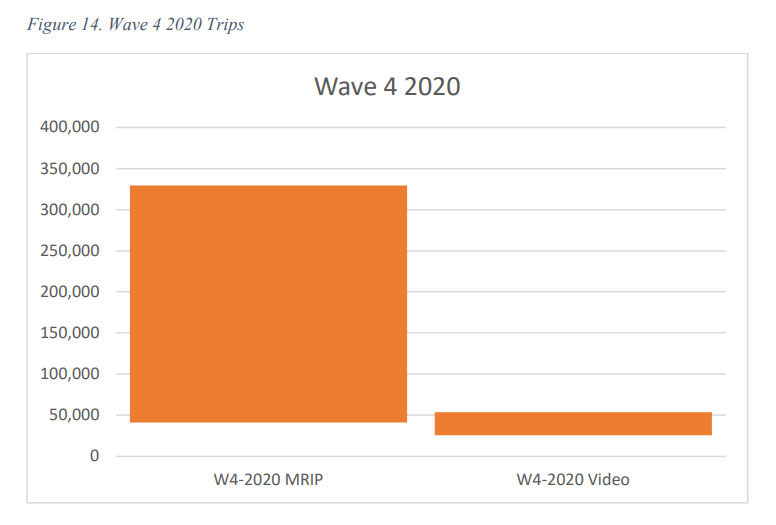We have proof: after years of bemoaning wildly impossible numbers presented by the Marine Recreational Information Program (MRIP) to no avail, there’s now solid evidence that at least some of their numbers are wildly wrong.
A quick refresher for those who aren’t up to speed on MRIP: it’s the program used by our fishery managers to count how many fish we take out of the sea. It’s the bean-counting process used to estimate that 600,000 rockfish were caught in March and April on the Bay in Maryland waters alone; that’s 10,000 fish per day, or 16 per minute of daylight. It’s how we “know” that anglers fishing from shore in Maryland caught 178,000 keeper sized sea bass weighing an average of 1.4 pounds each in a single season. And MRIP also tells us that in the state of Delaware, shoreline anglers caught 2.4 times more keeper flounder casting from dry land than all the flounder caught by party and charter boats combined. Yes, this is the same program responsible for the Gulf Coast’s red snapper fishery debacle that we’ve been hearing about for years.
Many MRIP assertions, like those above, are utterly ridiculous. Yet these are the numbers being used to develop the regulations you and I fish by. We’ve known for years that many MRIP numbers were absurd, but since no one can really get an exact, verifiable count on how many fish are reeled up out of the water, there hasn’t been any solid evidence to point to. The best we can do is say “that’s nuts,” to which the regulators generally shrug and say, “the law requires us to use these numbers.”
We. Have. Proof.
On March 31 of this year a memo was circulated regarding a pilot program in Ocean City, MD, where a video camera was used to record the number of fishing boats going through the inlet. Since it’s the only inlet in Maryland, the entire state’s boat-fishing “effort” (the number of anglers engaged in fishing) passes through it, and can thus be counted in a relatively accurate fashion.
There are still plenty of variables to account for (how many anglers are on a boat, for example), which the study addresses in different ways, and you can check it all out for yourself at the Mid-Atlantic Fishery Management Council website. But to avoid over-complexifying the results let’s stick with one data point here: the number of Maryland recreational anglers that are actually fishing in the ocean.

The above graphic shows the MRIP estimate range versus the video-count estimate range for the number of anglers participating in “Wave 4,” which is July and August. As you can see, MRIP’s range is quite huge (from under 50K to over 300K). The video count’s range is much tighter, and the very highest possible number just barely overlaps with the lowest of MRIP’s estimate range. If you look at the middle of each range you’re comparing around 190,000 anglers versus around 38,000 anglers.
In other words, MRIP has been asserting that five times as many people go fishing out of Ocean City, MD, during peak season, than actual video counting showed. MRIP’s recreational harvest numbers — used to tighten sea bass regs in recent years even as NOAA claims stocks have grown dramatically — are thus vastly inflated.
There’s your proof. Yet the memo circulated on this video boat-count states in its summary conclusions: “The range of effort suggested by this project overlapped with the confidence intervals from the relevant MRIP effort estimates, so this project did not indicate there is necessarily any inherent methodological problem with MRIP in this location.”
Well… If I cast my lure at a target five times and hit it once, and you cast at it five times and hit it all five times, I suppose I could argue that there’s not necessarily any inherent methodological problem with my casting. But my accuracy still sucks compared to yours. Sure, there’s “overlap.” There’s also overlap between a $5 balsawood glider and a $143 million F-22 Raptor.
Admittedly, there’s more to the story. Budget, equipment challenges, and manpower also come into play, and the memo was quick to point out that a number of variables (periods of fog, differentiating between fishing boats and non-fishing boats, etc.) make exact counts impossible. But here’s the bottom line: it’s obvious that the methodology MRIP is using to judge recreational angling effort sucks. We. Have. Proof.